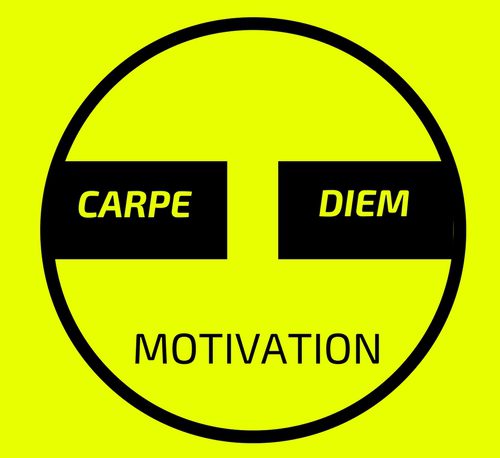“You are either supporting the vision or supporting division.”

Whether it is a Fortune 500 company or a youth sports club, every successful “team” requires a solidified, uniform, and enduring culture. Talent and hard work alone aren’t enough.
At its basic element, culture is the identifying norms, principles, and rules that lead a team throughout a year or season. Culture sets standards (high or low), creates a belief system for the group and defines values that exemplify the team.
As a leader, it’s not enough to decide on, dictate, and enforce the culture for the team. (Trust me. I’ve tried this. It doesn’t work!) Rather, it’s the leader’s responsibility to prove that the culture will benefit the group. The more inclusive the culture creation process is, the better chance the other players, teammates, employees, etc. will buy-in and thrive under it. Buy-in is predicated on having a meaningful belief system that everyone WANTS to follow, not one they are FORCED to follow.
Ok. So, what does a PROGRESSIVE culture mean?
A progressive culture focuses on personal development and values personal growth. It includes all team members in MAJOR decision-making processes. Leaders of progressive culture are more willing to delegate and less willing to dictate.
But before we dive more into the components of progressive culture, it’s important to examine a non-progressive culture first. Because both can’t function simultaneously.
Two questions to ponder over:
What are examples of a culture that’s not progressive?
What does a losing team look like, act like, and sound like?
A team that displays non-progressive culture or no culture at all for that matter, most likely doesn’t value positive communication (negative communication is common), doesn’t value organization (being on time, prepared and present), doesn’t value responsibility (accountability), and doesn’t value effort (focused work ethic). (More about these later).
A non-progressive culture is often individual-oriented. There’s nothing wrong with being individually-motivated to do well, but if this is valued more than the success of the entire group, and team members are encouraged to focus more on their individual success than that of the team, problems will undoubtedly arise. This kind of competitive, dog-eat-dog culture isn’t conducive to long-term success.
In a non-progressive culture, leaders don’t hold employees to high standards. They let them get away with being mediocre even if they have the potential for much more. Ultimately, it’s not up to the leader to will her employees to reach their max potential, but she should be willing to confront when they are failing to do their part.
Excuses are common in non-progressive cultures. Rather than viewing adversity from an inward perspective (What can we do to change? How can we solve this problem?) non-progressive cultures tend to blame their situation on external factors. Perhaps there are slight truths to these externalities but complaining about them and using them as an excuse isn’t progressive.
Losing teams often communicate with negative body language. This can be exemplified in interactions between team members (pouting, moping, eye rolls, poor eye contact, head down, etc.). It is the leader’s responsibility to show the other members of the team how negative body language can have a drastic effect on the overall morale and culture of the organization.
And finally, in non-progressive cultures, team members are never forced out of their comfort zones. If employees aren’t nudged out of their comfort zones, growth won’t happen. Staying in the comfort zone only leads to boredom and complacency.
Now that we know what a progressive culture IS not, let’s focus on what it is. To more easily demonstrate this I will use a metaphor.
The most fundamental part of any person, place, or thing is its core. Without a strong core, a human or animal body does not function very well. Fruits like pineapples and peaches would cease to stay together if there wasn’t a core to hold them together.
Just like any human, animal, or fruit, culture requires a strong core as well. The main principles which shepherd an organization or team.
The CORE of a progressive culture depends on the aforementioned components: Communication, Organization, Responsibility, and Effort.
COMMUNICATION Good teams talk. Bad teams don’t.
Communication is a skill that every team member must learn how to use. Some people are naturally gifted communicators, others aren’t. Some people are extroverted, others are introverted. Some people enjoy working in groups, others prefer working alone. It’s the leader’s responsibility to develop ways to cohesively connect all team members.
Greetings set the tone for the day!
One way to tell if a team has a progressive culture is in how team members greet each other. Do they utilize positive verbal communication skills (saying hello, asking how someone is doing)? Do they utilize positive body language (smile, wave, laugh, pat on the back or shoulder, high five)?
Do they ignore each other? Do they have negative body language (slumped shoulders, sighs, put on a vibe that they don’t want to be there)?
It might seem minute, but many cultural norms can be dictated in how team members greet one another. Perhaps making it a point to greet teammates might be forced at first, but over time, it will become natural, and hopefully, enjoyable.
Plus, walking into work with negative body language brings negative energy into the workplace. If this happens consistently, it’s difficult to create a culture where employees value being around each other.
It’s no coincidence that many of the best teams are comprised of teammates who enjoy being around each other on and off the court.
Body language can make or break a culture!
It’s important that positive communication is valued more than negative communication. Positive communication might need to be forced at first, but gradually, it will become the norm under which the team communicates.
Since body language accounts for more than 50% of the communication humans use in daily interactions, it behooves any leader to understand the value of creating a culture where positive body language is valued.
Three C’s of effective communication
Is the communication clear? Is communication consistent? Is communication constructive?
Clear communication means each team member understands their duties. The leader has clearly defined the role and responsibilities of each employee. Leaders are always available for questions and feedback from the other workers. Feedback is given not only to the group but also individually. Each team member clearly understands how their job performance influences the overall team performance.
Consistent communication means leaders and team members are constantly communicating with one another, especially when questions arise. It is the leader’s responsibility to frequently reach out to the team members and check-in, not to micromanage, rather to make sure everything is ok. It’s also important to arrange more formal individual meetings where team members can speak freely about their roles with the team, what’s going well and what’s not working.
Constructive communication means the communication between all team members doesn’t leave anyone feeling resentful, disrespected, or demeaned. The focus should always be on giving as much positive feedback as possible. When negative feedback is given, it needs to be done with a respectful tone. Contrarily, leaders can’t just tell employees how great they are all the time. They need to be stern and upfront when it’s necessary. Leaders must be willing to confront when necessary!
ORGANIZATION “Without organization and leadership towards a realistic goal, there is no chance of realizing more than a small percentage of your potential.” John Wooden
An organized culture + organized leaders = organized team members working together for a common goal.
Organization begins with preparation. EVERY DAY, leaders as well as employees, must be prepared. There must be a daily organizational plan in place that answers the question, “What are we trying to accomplish today?”
Deadlines must be carefully planned for weeks, if not months, in advance so there are no surprises. Contingency plans need to be set in motion because no one knows when a Plan B will be needed.
Team members must be encouraged, and if necessary, cajoled to be on time. There is no excuse for consistently being late. If team members know they will be late they should communicate this and plan accordingly.
Work time should be used wisely. Team members should be advised to take breaks when necessary so they can come back rejuvenated and more focused. Perhaps workdays need to be shortened so employees spend less time in the office if the time in the office is productive. Quality matters more than quantity.
Team members should be encouraged to develop themselves through professional development opportunities, educational opportunities, self-learning, etc. The only way employees, and therefore a team, will evolve is if they value continuous learning.
Leaders pave the way for their employees by being the most organized person on the team. It is difficult to expect workers to be organized when the leader isn’t organized.
RESPONSIBILITY “At the end of the day we are accountable to ourselves. Our success is the result of what we do.” Catherine Pulsifier
Ingrained in progressive culture are non-negotiables. These can include being on time, respect other team members, great work ethic, etc. Non-negotiables assist coaches in creating a culture of accountability. It’s a leader’s job to set this in motion, but it only endures when all team members buy-in.
It’s vitally important that leaders hold themselves (first and foremost) accountable for living up to these non-negotiables. Not until this happens can they hold the other team members accountable as well. If the culture is structured properly, team members will hold each other accountable without much influence from the leaders. This is the goal.
EFFORT “Effort is fully replenishable. There’s no reason to save any of it. Leave it all on the court.” Mike Krzyzewski
The most effective way for a leader to ensure its employees have strong work ethics is by setting an example. Leaders who not only talk about working hard but also consistently demonstrate it, are more likely to get buy-in.
It’s up to the entire team to develop characteristics that define hard work. Perhaps it’s coming in early or staying late when there is a big project that is nearing its deadline. It could also mean visiting a client face-to-face rather than merely calling him on the phone.
Laziness isn’t tolerated in a progressive culture. While there may be differences in the definition of hard work, laziness is easier to recognize. Here are some examples: Showing up to work late without informing anyone. Spending more time on nonwork-related things (social media, computer games, video games, text messages, etc.) than actual work. Doing the bare minimum, rather than taking the extra step to help teammates when they are overloaded with work or taking care of clients who need extra help.
In a progressive culture, leaders push team members to think outside of the box and get outside their comfort zones. Genuine growth occurs outside the comfort zone. Complacency and laziness are cultivated inside the comfort zone.
A progressive culture thrives when its teammates communicate consistently, organize and prepare routinely, hold each other accountable regularly, and always share a strong work ethic. One weak link in the chain and the entire culture can fall apart.
It sounds drastic, but it is undeniably true. Fortunately, people can change and are willing to change for the good of the team. The leader sets the foundation for the culture. It’s the responsibility of each team member to buy-in and set standards for everyone else to follow now and for the future.
New team members join this culture understanding the principles and values that are already securely in place. Leaders are responsible for introducing the culture and setting the cultural tone. If new team members are unable to or unwilling to adapt to the cultural standards, it’s the leader’s duty to try to reel them in. If this fails, then these team members must be removed from the organization.


Thanks Mikey!
LikeLike
Excellent work! May I use some of this when working with my coaches at Priory?
Thanks,
Coach Barker
LikeLike
Hey Coach,
Thanks for reading. And of course, you can share this information with whomever you like. Congrats again on the new gig. What an opportunity!
All the best,
Mike
LikeLike